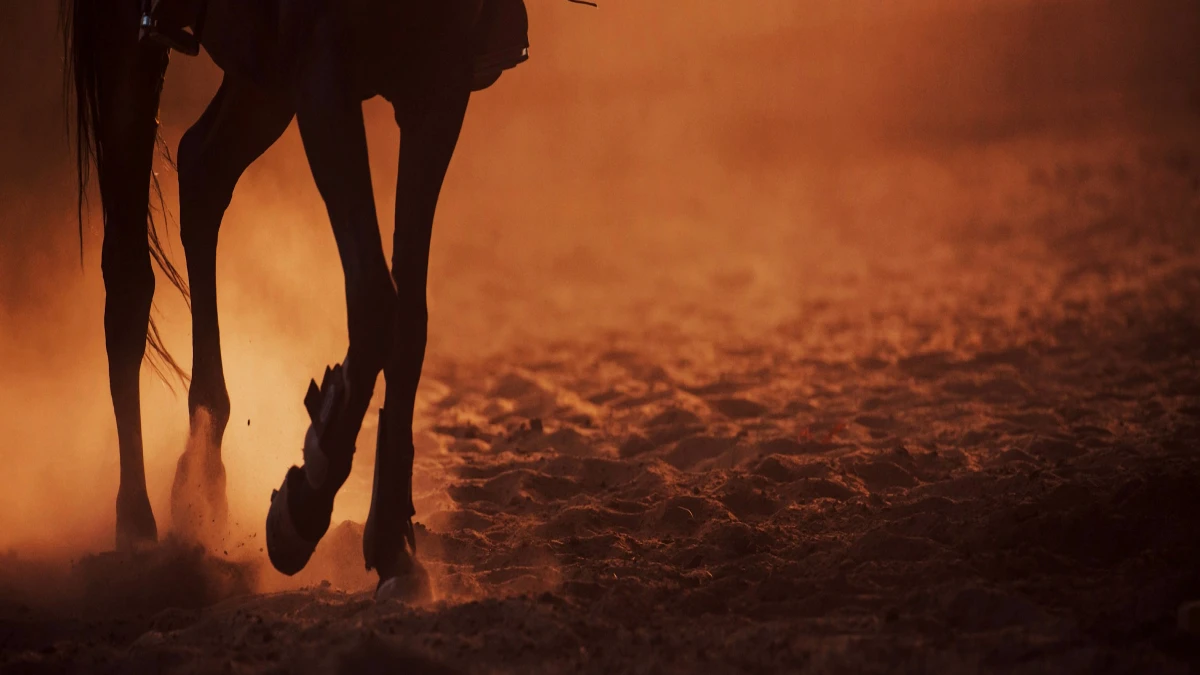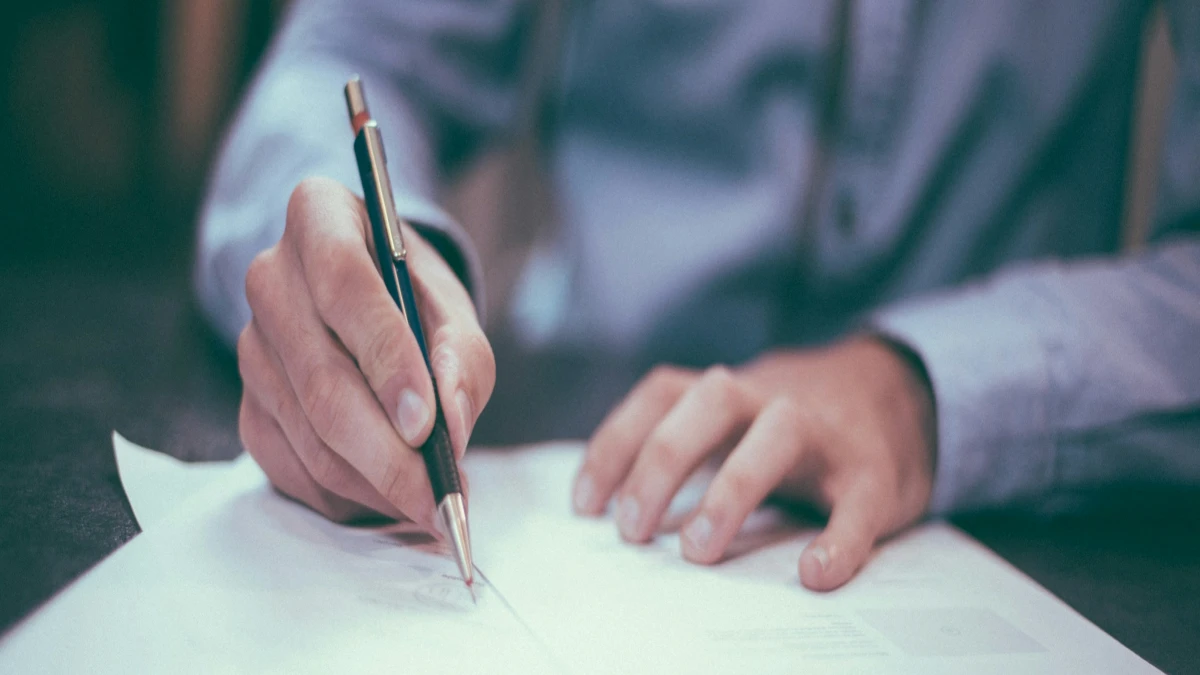Self-Mutilation in Horses: Causes and Prevention
Jul 22, 2023 by Jamie Finch

Self-mutilation, a distressing and challenging behavioural issue, can deeply concern horse owners, trainers, and caretakers.
This behaviour occurs when horses intentionally harm themselves, resulting in injuries or wounds.
Self-mutilation may manifest in various forms, such as biting, kicking, or rubbing against objects, leading to cuts, abrasions, or open wounds. Identifying and understanding self-mutilation is crucial for early intervention and addressing potential underlying issues affecting the horse's well-being.
What is Self-Mutilation in Horses?
Self-mutilation, also known as self-injurious behaviour (SIB), refers to horses causing intentional harm to their bodies.
This behaviour may be biting their limbs, aggressive kicking against stall walls or objects, excessive rubbing against fences, tail chewing, and engaging in cribbing or windsucking behaviours.
Recognising self-mutilation is essential for taking prompt action to alleviate the distress of the affected horse and prevent further harm.
Differentiating Self-Mutilation from Other Behaviours
It is crucial to distinguish self-mutilation from normal horse behaviours to understand the severity of the issue.
While grooming, scratching, and playful behaviours are typical and serve essential purposes, self-mutilation involves the horse intentionally causing harm to itself.
Identifying self-mutilation accurately allows us to address the root causes and choose appropriate interventions.
Common Causes of Self-Mutilation
Self-mutilation in horses can arise from a combination of physical, psychological, and environmental factors.
Identifying these underlying causes is essential for developing effective strategies for prevention and management.
Here are the common causes of self-mutilation in horses:
Pain or Discomfort: Underlying physical issues, such as skin conditions, joint problems, or dental issues, may lead to self-mutilation as a coping mechanism.
Psychological Stress: Social isolation, traumatic experiences, or confinement can trigger self-destructive behaviours, reflecting the horse's emotional distress.
Boredom and Confinement: Horses kept in limited spaces without mental or physical stimulation may resort to self-mutilation out of frustration or boredom.
Repetitive Behaviours: Horses may develop repetitive behaviours like cribbing or windsucking, which can escalate into self-mutilation over time.
Nutritional Imbalances: Inadequate nutrition or mineral deficiencies can lead to abnormal behaviours, including self-mutilation.
Consequences of Self-Mutilation
Self-mutilation can have severe consequences for the affected horse's health and well-being.
One primary concern is the risk of wound infections, as self-inflicted wounds are more prone to infection if left untreated.
Moreover, self-mutilation can deteriorate the horse's physical condition, potentially resulting in reduced performance during training or competitions.
Emotionally, self-destructive behaviours can exacerbate the horse's distress, leading to further behavioural issues.
Practically, treating self-inflicted wounds can be financially burdensome for horse owners and caretakers.
Prevention Strategies
To address self-mutilation effectively, proactive prevention strategies are essential.
By implementing these strategies, we can improve the overall well-being of horses and create a conducive environment for their mental and physical health.
Here are the critical prevention strategies:
Address Underlying Health Issues: Regular veterinary check-ups and timely treatment of physical ailments are crucial in reducing the risk of self-mutilation caused by pain or discomfort.
Enrichment and Stimulation: Providing mentally enriching environments with toys, puzzles, and social interaction can combat boredom and reduce stress, potentially preventing self-mutilation.
Ample Turnout: Ensuring horses have access to regular turnout in suitable pastures allows them to socialise, graze, and move freely, promoting their natural behaviours and reducing the likelihood of self-destructive actions.
Companion Animals: Housing horses with compatible companion animals can alleviate loneliness and isolation, positively impacting their mental well-being.
Balanced Nutrition: Working with an equine nutritionist to develop a balanced diet that meets the horse's nutritional needs can minimise the risk of abnormal behaviours, including self-mutilation.
Conclusion
Addressing self-mutilation in horses is a multifaceted task that requires a comprehensive understanding of the underlying causes and a commitment to implementing preventive strategies.
By recognising the potential consequences of self-mutilation and proactively engaging in prevention efforts, we can help our equine companions lead healthier, happier lives.
Early intervention and collaboration with equine professionals are crucial in addressing self-mutilation and promoting the overall well-being of our beloved horses.
With this knowledge, you can create a world where frequent self-mutilation is controlled, and your horse maintains a positive outlook.
Explore More Topics
Understanding Behavioural Changes in Horses
When a horse’s behaviour suddenly changes, it’s rarely without cause. This blog explores the physical, emotional, and environmental reasons behind behavioural shifts — and how owners can respond with understanding, clarity, and care.
May 31, 2025
10 Essential Groundwork Exercises to Improve Equine Agility
This blog post, "10 Essential Groundwork Exercises to Improve Equine Agility," provides a comprehensive guide for horse owners looking to enhance their horse's agility, coordination, and responsiveness through progressive groundwork. Each exercise includes step-by-step instructions, explains why the exercise is important for building trust, focus, and physical conditioning, and details how these skills translate into improved performance in agility courses and other equestrian pursuits.
Oct 28, 2024
Top Tips for First-Time Horse Owners: How Equine Insurance Can Give You Peace of Mind
Equine insurance is a crucial safety net for horse owners, providing financial protection against unexpected costs related to veterinary care, accidents, injuries, and liability claims. Whether you're a first-time owner or an experienced equestrian, insuring your horse offers peace of mind by covering expensive vet bills, public liability issues, theft, and even death.
Oct 23, 2024







